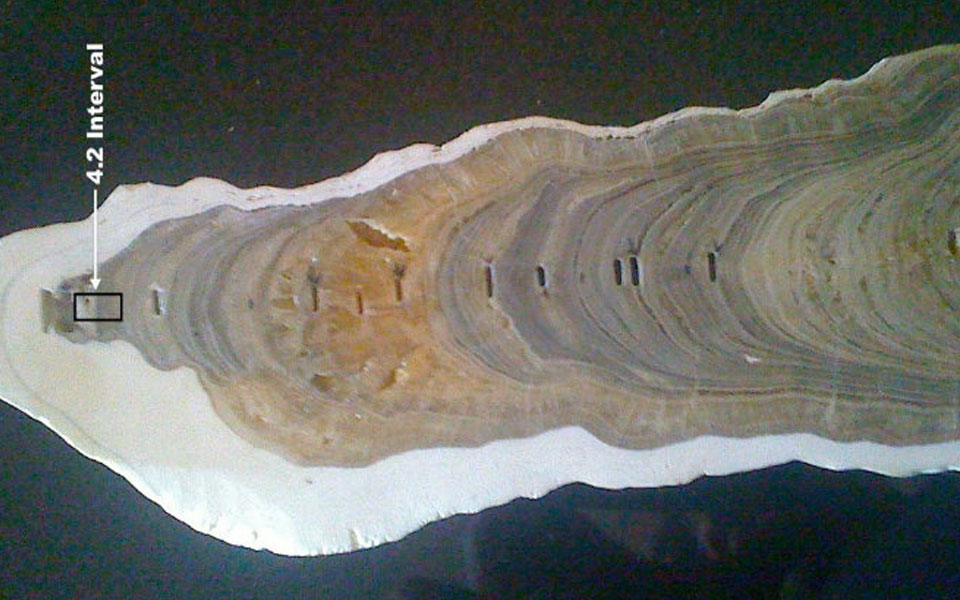London, July 18: Geologists have classified the last 4,200 years as being a distinct Earth age and are calling it a new chapter -- the "Meghalayan Age" -- the onset of which was marked by a mega-drought that crushed a number of civilizations worldwide.
The new classification came about after stalagmites on the floors of caves in the northeastern Indian state of Meghalaya were discovered that were considered as a significant proof for the latest distinction, the BBC reported on Wednesday.
Earth's existence of 4.6-billion-year is divided into slices of time. Each slice corresponded to significant happenings -- such as the break-up of continents, dramatic shifts in climate, and even the emergence of particular types of animals and plant life.
The current age in which we live is called the Holocene Epoch, which reflects everything that has happened over the past 11,700 years -- since a dramatic warming kicked us out of the last ice age, the BBC reported.
But the Holocene itself can be subdivided, according to the International Commission on Stratigraphy (ICS).
The ICS is the official keeper of geologic time and it proposed three stages be introduced to denote the epoch's upper, middle and lower phases. These all record major climate events.
The Meghalayan, the youngest stage, runs from 4,200 years ago to 1950. It began with a destructive drought, whose effects lasted two centuries, and severely disrupted civilizations in Egypt, Greece, Syria, Palestine, Mesopotamia, the Indus Valley and the Yangtze River Valley, the BBC report added.
To win the classification, a slice of geological time generally has to reflect something whose effects were global in extent and be associated with a rock or sediment type that is clear and unambiguous.
For the famous boundary 66 million years ago that marks the switch in period from the Cretaceous to Tertiary, this "golden spike" is represented by traces in sediments of the element iridium. This was spread across the planet in the debris scattered by the asteroid that wiped out the dinosaurs.
For the Meghalayan, the spike is epitomized in specific chemical signatures, the finest example of which can be seen in the layers of stalagmites on the floors of caves in the northeastern Indian state of Meghalaya.
It was likely triggered by shifts in ocean and atmospheric circulation, the ICS said.
The Meghalayan Age is unique among the many intervals of the geologic timescale. Its beginning coincides with a global cultural event produced by a global climatic event, said Stanley Finney, Professor at Long Beach State University and Secretary-General of the International Union of Geological Sciences (IUGS), which ratified the ICS proposal.
The middle phase of the Holocene will be referred to as the Northgrippian, and runs from 8,300 years ago up to the start of the Meghalayan. The onset for this age was an abrupt cooling, attributed to vast volumes of freshwater from melting glaciers in Canada running into the North Atlantic and disrupting ocean currents.
The oldest phase of the Holocene -- the exit from the ice age -- will be known as the Greenlandian. The International Chronostratigraphic Chart, the famous diagram depicting the timeline for Earth's history will be updated, the BBC reported.
Let the Truth be known. If you read VB and like VB, please be a VB Supporter and Help us deliver the Truth to one and all.
Mangaluru: This year’s Karavali Utsava will commence on December 20, with a wide range of cultural, adventure, and tourism-focused programs planned across Mangaluru and other parts of the Dakshina Kannada district, Deputy Commissioner Darshan H.V. said.
He was speaking while presiding over a Karavali Utsava preparedness review meeting held at the District Commissioner’s office.
The main event will be held at the Karavali Utsava grounds in the city. In an effort to promote beach tourism, special programs will be organised at six beaches across the district, which include Panambur, Ullal, Someshwara, Sasihitlu, Tannirbhavi, and the Blue Flag Beach.
ALSO READ: Udupi: Toddler slips from mother's hand while drawing water from well, dies
Outlining the schedule, the Deputy Commissioner said adventure sports will be held at Sasihitlu Beach, while a wine, cheese, and cake festival will take place at the Tannirbhavi Blue Flag Beach.
A music festival and triathlon are planned at Tannirbhavi Beach. Football, volleyball and other sports events will be organised at Ullal Beach, cultural programs at Panambur Beach, and a music evening and yoga program at Someshwara Beach.
In addition, food festivals featuring a variety of local and regional cuisines will be held at all beaches. The Kala Parba program and a flower and floriculture exhibition will be organised at Kadri Park, while a film festival is also planned in Mangaluru city.
A football tournament will be held at Nehru Maidan on December 27 and 28, and special programs will be organised at Pilikula Nisargadhama. To attract tourists, helicopter joyrides have also been arranged, the Deputy Commissioner said.
The review meeting was attended by Zilla Panchayat Chief Executive Officer Narvade Vinayak Karbari, Mangaluru Deputy Divisional Officer Meenakshi Arya, Deputy Commissioner of Police Mithun H.N., Deputy Conservator of Forests Antony Mariappa, and other officials.





